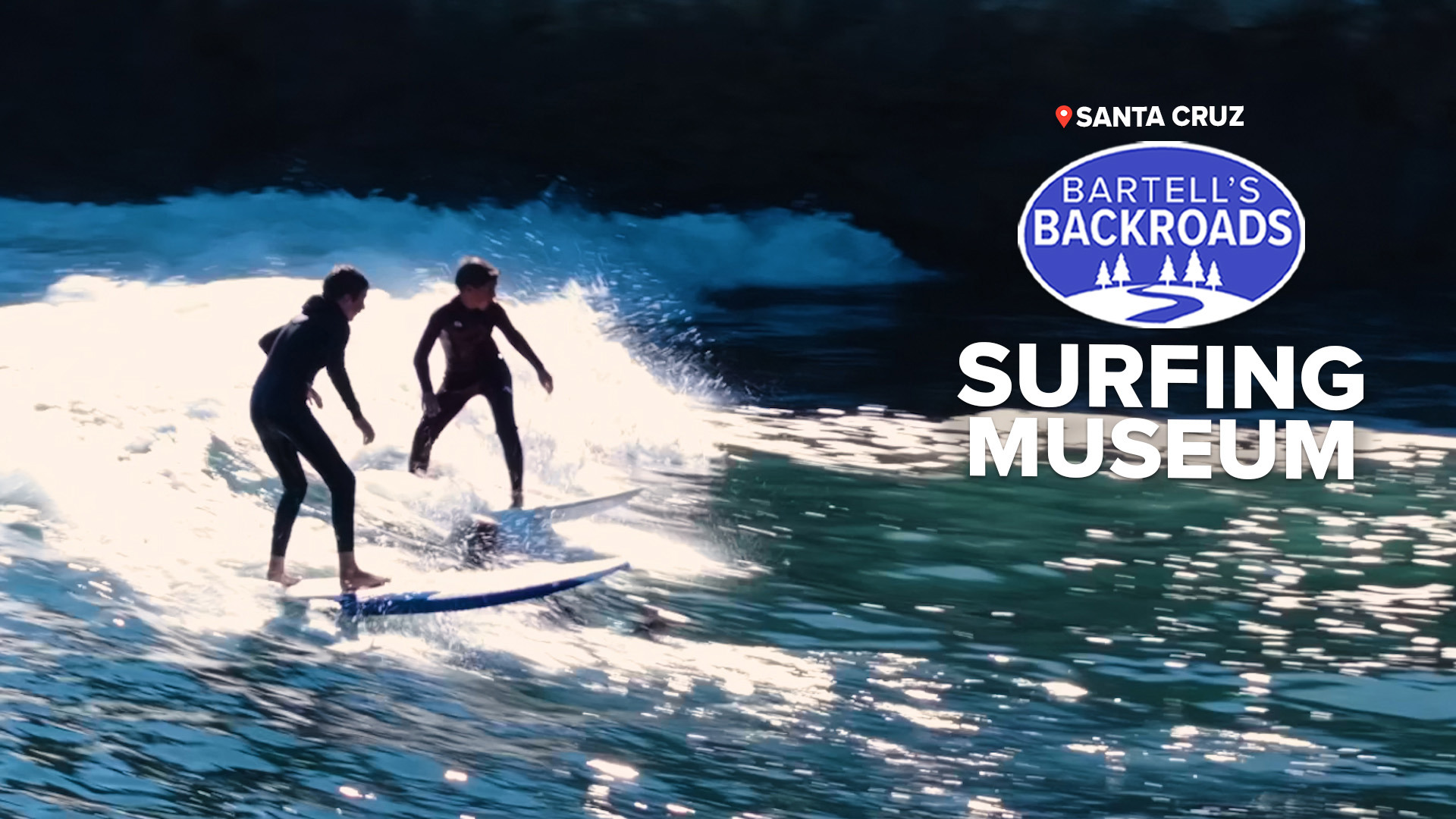SANTA CRUZ, Calif. — Jumping the cliff at Steamer Lane is almost a rite of passage for any young surfer in Santa Cruz. People have been surfing there since 1885, after three Hawaiian princes introduced the sport to locals while on vacation.
“They brought surfing here and actually made the boards,” said Kim Stoner, co-founder of the the Santa Cruz Surfing Museum.
The museum, founded by Stoner and his friend Bob Pearson, chronicles Santa Cruz’s lengthy and sometimes odd surfing history.
"This is one of the best surf spots in the world," Pearson said. "It's really famous. People know all about it."
When the Hawaiians first introduced surfing, they used heavy boards made from solid wood that often weight hundreds of pounds. Along with long boards, short boards and really short boards, you will find a surfboard destroyed during a shark attack.
“Shark attacks. They're not common. But, they have happened,” Stoner said.
► See an interactive map of everywhere John has visited on the backroads
► Watch all of the Backroads videos
► Follow John on Facebook
Pearson is a world-renowned surfboard maker and likes to show museum visitors the progression of surfboard manufacturing. In his younger years, he surfed at Mavericks Beach, which is home to some of the largest waves on the West Coast, and because of his experience, he was asked to make boards for the 2012 film "Chasing Mavericks."
“I made them all the boards for the movie, 240 boards for the movie,” Pearson said.
He also acted in the film alongside Gerard Butler and Johnny Weston.
"It was all about the local surfers. It was a good story about it," he said. "It was accurate as hell. It’s a great movie."
More than a dozen surfing-related movies and TV shows have been filmed in Santa Cruz including "Beautiful Wave," "Back to the Beach" and "Swell." The reason being is the waves are very consistent here.
“The nature of the winds and the cliffs there keep this glassy — the kelp keeps it glassy — and you get these big swells coming so it doesn't blow out so easily,” Pearson said.
The Surfing Museum is not only a tribute to sport but the athletes as well. Many of the kids surfing in Santa Cuz today are about the same age as the three Hawaiian princes that first surfed these waves in 1885.
MORE FUN AT THE BEACH ON THE BACKROADS: After years of erosion, Santa Barbara's 'One Thousand Steps Beach Access' is a bit of a misnomer



















